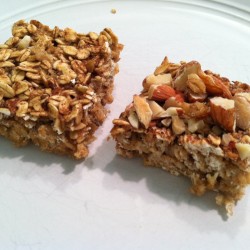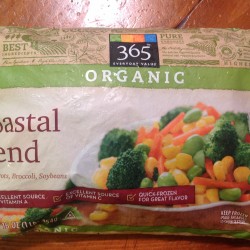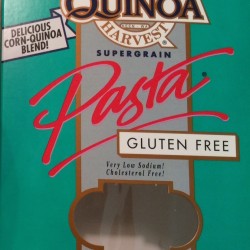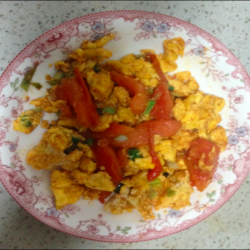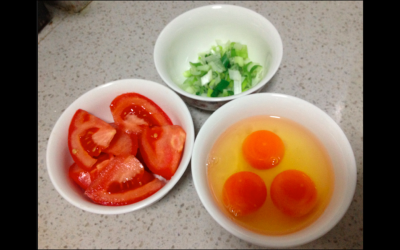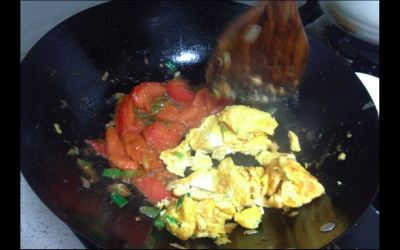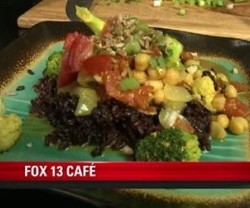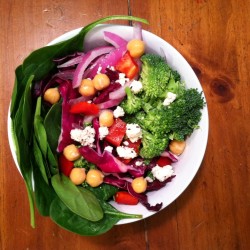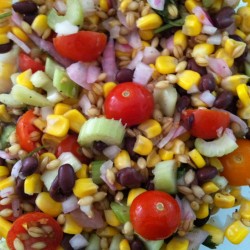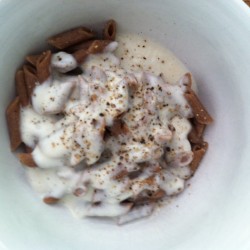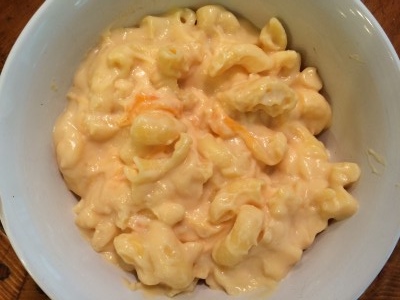After our class this week on adapting the principles of China’s Longevity Village to our lives and the choices we face in eating real healthy food vs. fake unhealthy food (which turns out to be what most of us Americans are eating most of the time), a mom came up to me and asked: “I have just one question. What foods can you actually feed your family?”
We all want to eat healthy, but we often don’t know how, or don’t have time or the will. I have found seven simple strategies that I share here in the hopes that they can help you eat and enjoy more real food.
I love the food I eat. Everyday I throw a few healthy ingredients together and end up with something delicious and different every time.
I rarely follow recipes because I’m usually in a hurry and already hungry. By having real foods all ready to throw in, I can successfully make real food both fast and delicious.
Cooking for others has always been one of my greatest fears. Quite frankly, I’d rather stand up in front of a large audience and give a talk than cook for a handful of people.
Because I have traditionally felt so inadequate in the culinary arena, writing this article takes some courage for me. However, I have found many things that enable me to make real food taste good quickly. I hope that what I share will spark some new ideas and make real food easy for you to prepare and delicious for you eat.
I must say that on the occasions I do prepare food for my friends, they tell me that it tastes superb and they ask for the recipes. Sometimes I wonder: “Are they just trying to make me feel good?” But in reality, I don’t think this is the case because I truly find these foods delicious myself.
Let me apologize up front—I don’t measure. I won’t be able to give you quantities. But I can give you some strategies and ideas to run with on your own.
Who knows? Maybe you’ll find that this approach can work for you even better than providing you with a basic recipe!
Seven Strategies for Making Real Healthy Food Easy to Eat
1. Wash, cut up and store veggies in easy to access containers as soon as you bring them home. This makes the veggies easy to eat as is or throw in a dish. Some may worry that the veggies could go bad more quickly. But think about it–you’ll be eating them more quickly too.
2. Always have a quick healthy protein ready. Soak, cook and store a large batch or two of beans or legumes in the fridge that can be mixed into last minute dishes. Also keep on hand tofu, nuts, seeds, wild low-mercury frozen fish (i.e. salmon), pasture-fed organic eggs, grass-fed organic meats in moderation, if desired.
3. Make a soup or a chili each week. These keep well for many days and can be used as sauces and combined with other dishes.
4. When you make a dish, make it in bulk. Save leftovers in small glass containers which can be packed easily the next day for lunches. This saves so much time and provides healthy meals at or away from home for days.
5. Pack healthy foods with you everywhere you go. As it can be so hard to find healthy foods, and so hard to resist the unhealthy ones when you’re hungry, taking your own food can be a life-saver. Nuts keep well and satisfy as a healthy protein and fat. We also love nut butters on sprouted grain (flourless) toast.Cut up fruits and veggies in a portable container work well on a daily basis.
6. Don’t hesitate to eat your stir-fries and salads for breakfast. A vegetable, healthy protein, and fruit is standard fare with our breakfast each day. On a recent trip, a close family member saw us all eating a spinach salad for breakfast and asked, “What kind of food is that for a breakfast?” It’s one that gets us off to a good start for eating real food first and feeling great! It can really help stave off the desire for the junkier kinds of foods.
7. Reach for your real foods first when hungry. Having healthy foods and healthy dishes readily available makes it just as easy to grab something healthy as it is to grab junk food.
Speaking of junk food, lest I give you the wrong impression, we are still a work in progress. We still have some of the packaged, processed foods in our home, and we still eat them. But I will tell you this: the availability of real foods now dramatically outweighs the processed foods and the real foods get eaten much more frequently than the processed foods. Onward and upward!
Healthy Ingredients I Stock in My Kitchen
(Keep it simple. Just start with your favorites.)
Dry beans and legumes (organic dried in bulk, and bpa-free canned): mung beans, garbonzos, black beans, pintos, cannellini, navy or other white beans, lentils, split peas, etc.
Nuts and seeds: almonds, walnuts, pecans, cashews, brazil nuts (high in selenium), chia seeds, hemp seeds, flax seeds, sesame seeds, sunflower seeds, etc.
Nut butters (organic): peanut, almond, cashew, walnut, pecan, macadamia, sunflower seed, etc.
Whole grains (organic in bulk): Oat groats, barley, kamut, millet, amaranth, spelt, rye, buckwheat, wheat, thick rolled oats, etc.
Vegetables (organic—wash, cut and store for quick and easy use): Onions, garlic, kale, spinach, other leafy greens, cucumbers, carrots, cauliflower, bell peppers, celery, mushrooms, sweet potatoes, etc.
Fruits (organic–priority on in season/local fruits): Berries, oranges, apples, pineapple, watermelon, red grapes, kiwi, pomegranates, bananas, tomatoes, avocados, lemons, limes, etc.
Spices: Cinnamon, cumin, cloves, garlic, curry, tumeric, etc., I especially love spices such as Chinese Five Spice, Indian Kitchen King, or Mediterranean Herbs de Provence that have the right combinations all ready to go.
Herbs (dried and fresh when possible): Basil, parsley, rosemary, dill, cilantro, etc.
Vinegars/cooking wines: White vinegar, apple cider vinegar, balsamic vinegar, white balsamic vinegar, rice vinegar, tarragon vinegar, white cooking wine, dry sherry cooking wine, etc.
Other sauces: Braggs amino acids, low sodium soy sauce, hot sauce, organic tomato sauce (I like the Whole Foods 365 All natural fat free brand), mustard, homemade hummus, vegetable broth, vegetable boullion, apple sauce, etc.
Bread/Tortillas/Pasta: Organic, sprouted grain (no flour) breads, buns, tortillas and pastas such as Ezekiel or Food for Life brands
Milks and Dairy (organic): Almond, soy, cow, coconut, plain yogurt, pasture-raised eggs, etc.
More Healthy Proteins: Frozen Wild Alaskan Salmon, canned Wild Alaskan Salmon, grass-fed organic meats, tofu, frozen organic beans, etc.
Kitchen Tools that Make It Easier to Eat Real Healthy Foods
(Use what you have and slowly add as you go)
Over the 21 years that John and I have been married, we’ve invested in a few solid, high quality kitchen tools. From my perspective, these tools completely pay for themselves, as they make it easy to create healthy dishes quickly, and avert the desire to reach for the overly-processed, less-healthy alternatives which can lead to higher costs in health in long-run.
1. Blendtec, Vitamix or other high quality grinder
2. Wondermill or other high quality grinder
3. Bosch or other high quality mixer
4. Nesco Dehydrator or other high quality brand
5. Nesco Pressure Cooker or other brand
6. Ceramic dutch oven
7. Lemon/lime Juicer
8. Citrus Zester
The tool we use the most is our industrial quality blender, which allows us to quickly make great soups, sauces, smoothies, batters, nut butters…you name it. It has been well worth the investment for us.

Jane’s Southwest Salad
Healthy Food Recipe: Fresh Organic Southwest Salad
(Without measurements—It’s ok! Try it!)
Here’s a delicious and satisfying organic salad that I threw together last week with the ingredients I had on hand:
Black beans
Corn
Diced celery
Diced red onion
Halved cherry tomatoes
Barley (cooked al dente—this I had cooked in bulk and stored in my fridge to add to many dishes)
Fresh cilantro
Fresh lime juice
Lime zest—lots!
White balsamic vinegar
Kosher salt
Fresh ground pepper
You get the idea. You can throw in anything you have—you can change the vegetables to cucumbers, broccoli, kale, carrots, add avocadoes…you can switch the beans/legumes to garbanzos, lentils, cannellini… you can adapt the dressing to lemon, lemon zest and garlic….you can vary the herbs to basil and parsley…whatever you have in stock.
The key is to keep healthy foods all around you, make them easy to access, prepare them in bulk, and don’t be afraid to experiment. Just grab whatever healthy ingredients you can find and create any combinations you desire.
Please help me and all those reading! Please share your real food recipes and tips with all of us in the comment box below.
Here’s to a week filled with real food, real living and real happiness! Cheers! Jane
